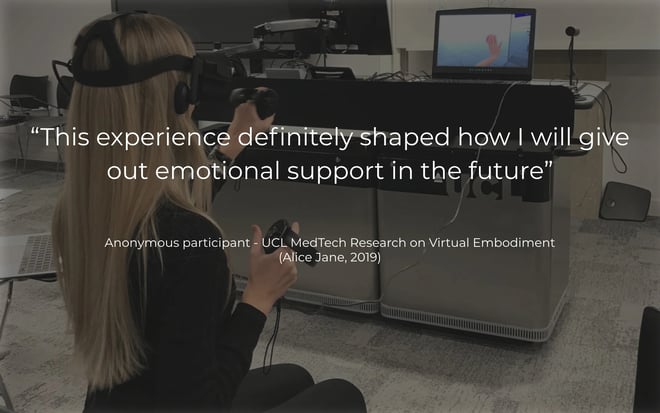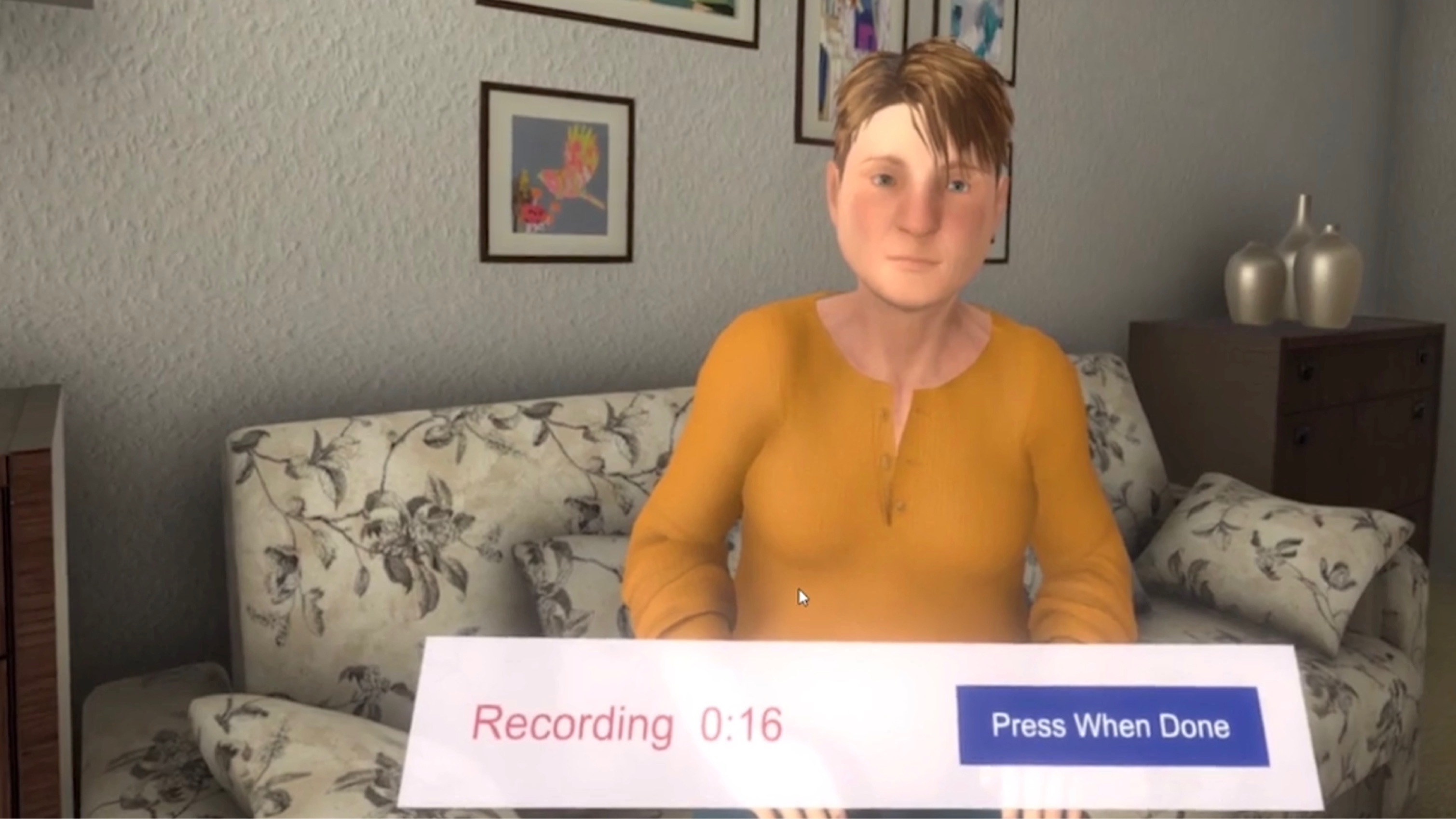This article was originally published in Laval Virtual's magazine special edition on Health which can be downloaded in full here.
In the world of mental healthcare, poor soft skills can have dire consequences, and the current semi-supervised learning on the job approach leaves students terrified and patients not properly cared for. How can we safely prepare mental healthcare students for difficult conversations with patients? BODYSWAPS® has worked with SAGE Publishing to create an immersive learning experience that uses VR, AI and a body-swapping mechanic to let students safely prepare for the real-world.
The Challenge

How well prepared did you feel on Day 1 of your first ever job? How confident were you in your first interactions with clients, colleagues, bosses? The transition between the classroom and the real working world is often abrupt. Higher education as we know it is not designed to let you experience the human interactions which will form, if not the core, at least an important part of your work day. Essentially, there is a gap between knowledge and competence. That gap is called experience.
For psychiatric nurse students, entering the real-world can be utterly terrifying. Before their first hospital placement, the majority won’t even have role-played patient-nurse interactions. Some lucky few will have had a few minutes with an actor as part of an assessment. It is too costly and impractical for hospitals to organise constant supervision for every student. And so the students are often left, absolutely inexperienced, to interact with patients suffering from severe mental conditions. There is no room for trial and error there, for experimentation.
You wouldn’t let a pilot come anywhere near a plane until they had completed hundreds of hours in a flight simulator. Why should we allow this to happen in the context of critical healthcare?
The approach & results to date

Academic researchers have been studying the behavioral effects and performance of Embodied Virtual Reality learning (EVR) for over a decade. Even at its most basic level, VR is the most immersive learning medium there is besides reality itself. Comparative studies of virtual reality, video-based and text-based learning have hailed VR as the best performing medium in terms of engagement levels, understanding and memorability. Beyond that, recent academic research led by Stanford University and the University of Barcelona, has shown that VR is a very powerful tool to drive and sustain behavioral change. Fascinating results include reducing implicit racist bias, transforming subconscious attitude towards homeless people or improving mental health through self-counselling in VR.
Working with SAGE Publishing to solve the challenge of preparing psychiatric nurse students for the real-world, we sought inspiration in that body of research whilst bringing in principles of adult learning design. With the help of Dr. Sue Barker from Cardiff University, we designed the Susan Experiment; essentially a flight simulator for patient-nurse interaction training. The Susan Experiment is a 10-minute experience that combines embodied Virtual Reality and conversational AI to create an interactive and realistic patient-nurse scenario. The experience has 4 keysphases : Q&A, Intervention, Body-Swap and Analytics.
- During the Q&A, the learner, now embodied, finds herself face-to-face with Susan, a suicidal patient. The learner can ask a series of pre-set questions to get Susan to describe her current state of mind.
- The learner is then tasked with providing an intervention to Susan, giving her contextual advice on how to cope better with her days. Importantly, they do so using their own voice and body language, saying whatever they want.
- Once done, the learner “body-swaps” with Susan. They takes Susan’s place and see and hear themselves back giving the intervention from her perspective. The learner is directly impacted by what they said and how they said it. They can self-reflect and identify ways for improvement, both in content and delivery.
- Finally, the learner accesses an Analytics Dashboard consisting of behavioral and semantic data and gets personalised recommendations on how to improve.
The experience is currently piloted by SAGE Publishing at a few UK and US universities. A small scale study led by Alice Jane from UCL London found that over 90% of participants felt that the experience helped them reflect on their performance and 93% declared wanting to try the experience again to improve.
Limitations

Although very promising, the feedback to date also serves to underline the journey left to travel before immersive learning becomes a staple of higher education for human-centered jobs. Firstly, there are a number of technical areas to work on, from a necessary leap in conversational AI capabilities to allow free conversations to improved behavioral analytics via, for example, biofeedback or speech emotion data.
Finally, self-reflection on the job is difficult and soft skills training should benefit from the support of lifelong learning strategies from hospitals.
What we learned

We learned a lot developing the Susan Experiment. Designing great content is only the first part of the challenge. Until immersive learning becomes standard in soft skills training, we recommend adopting an agile, iterative approach to deployment.
Firstly, If you are looking to explore immersive learning, you should identify an internal champion. Immersive Learning comes with a number of typical innovation-related challenges: getting buy-in from budget holders more used to traditional approaches, managing procurement-related issues around hardware, dealing with the logistics necessary for on-site deployment, etc. Successful deployments require the client to be hands-on and a dedicated point-of-contact with the resources and decision-making power to move the project forward.
Secondly, we would advise starting with a big challenge on a small scale. Tempting as it is to justify launching an immersive learning programme by its cost-effectiveness at scale, it is recommended to focus first on a small number of stakeholders for whom the training topic area is mission-critical. This will speed up buy-in, ad-hoc deployment, and greatly help with the collection of feedback.
Finally, you should facilitate the initial deployment. Ultimately, immersive learning through VR lends itself to a self-service solution that will allow learners to practice and learn at the point of need. But an initial facilitation period is highly recommended to get users acquainted with the technology. The first contact (at least) with VR learning should be facilitated in a face-to-face intervention to allow for immediate feedback.

